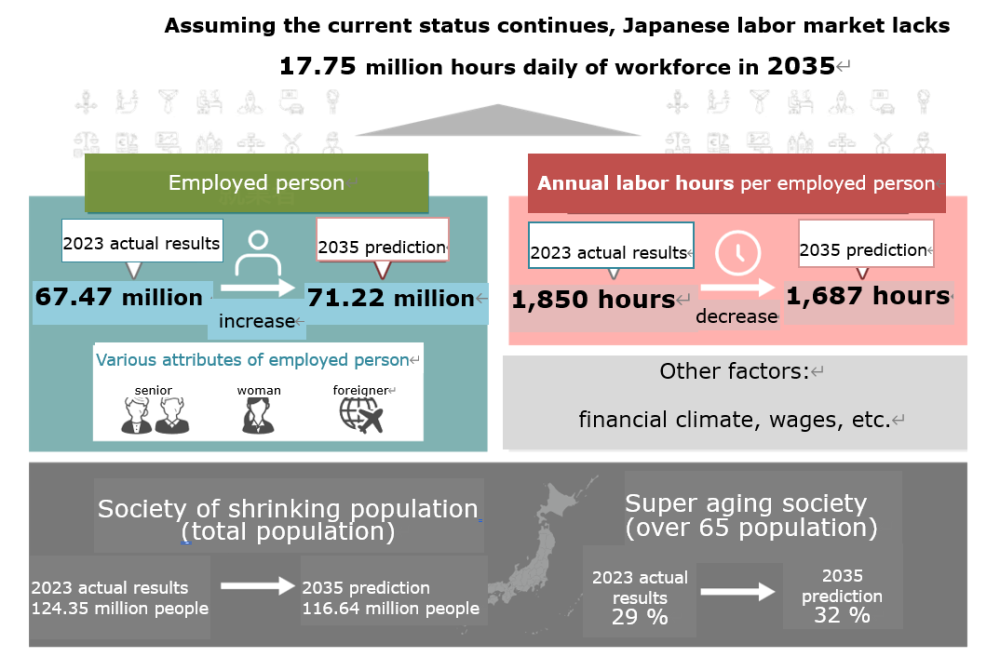2024.11.07
News
Releasing the “Labor Market Future Forecasts 2035”
The number of employed persons is projected to increase from now to 2035, however, Japan will face a shortage of the labor force of 17.75 million hours per day (equivalent to 3.84 million workers), which is twice as serious as of 2023.
* Chuo University and Persol Research and Consulting Co., Ltd. held a joint press release on October 17, 2024. This article was reprinted from the press release.
Approximately 6 years have passed since the last “Labor Market Future Forecasts 2030” was released in 2018. The labor market saw an increase in various employed persons including women, seniors, and foreigners. Furthermore, the market is shifting drastically and various working styles such as remote work or side jobs are penetrating the market as a by-product of the pandemic. Taking such situations into account, the current “Labor Market Future Forecasts 2035” considered the labor shortage in terms of “man-hour” instead of “manpower,” and included not only “Japanese” as the target but also “foreigners,” to grasp more realistic labor demand.
■Outlook of labor market 2035
The number of employed persons of seniors, women, and foreigners is expected to increase from now to 2035 alongside the growth in their labor participation, however, the working hours per person declines, and the labor shortage intensifies.

■Key Takeaways
(Labor Market Forcast)
a) Japan will have a projected labor shortage of 17.75 million hours daily (equivalent to 3.84 million people) in 2035. This figure is equivalent to 3.84 million workers and the situation will be exacerbated 1.85 times than in 2023.
※ A formula to calculate the labor shortage rate: (1- “labor supply” / “labor demand”) x 100
==================================================================================================
